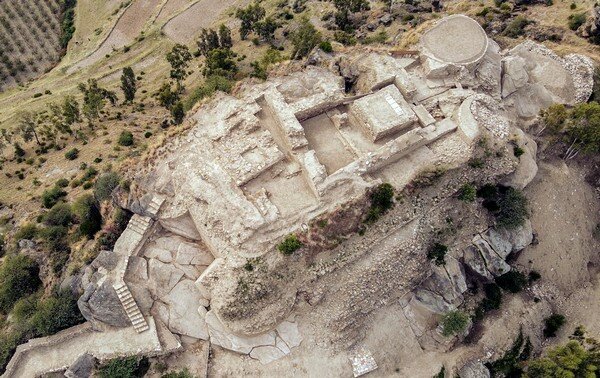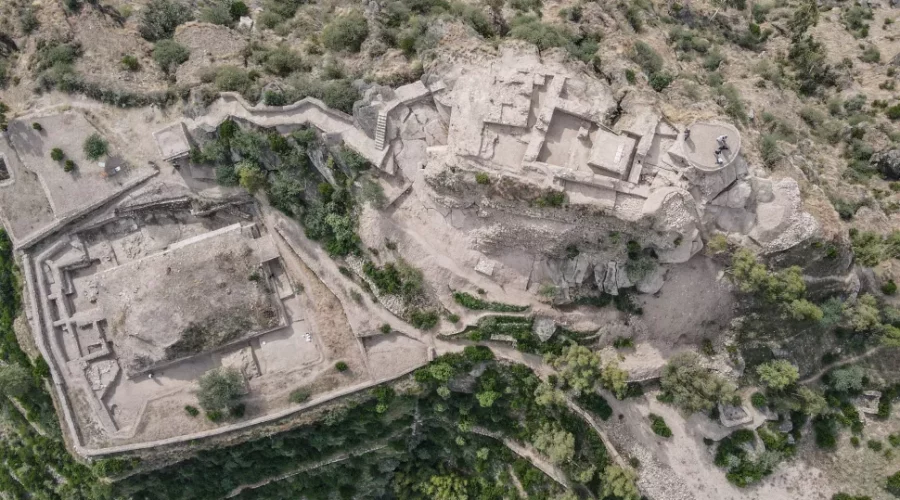One of the most ancient Buddhist temples in the world has been uncovered during the latest archaeological excavation campaign of the Italian mission in the city of Barikot, in the Swat region of Pakistan – part of the ancient Gandhara region that was conquered by Alexander the Great and gave rise to a mixing of Buddhist belief and Greek art.
Barikot is mentioned in Greek and Latin texts as “Bazira” or “Vajrasthana” — one of the cities besieged by Alexander the Great. The archaeological stratigraphy dug during the campaign and Carbon-14 dated reveal that the city did, in fact, exist during Alexander the Great’s campaigns around 327 BC.
Barikot was an important city for the management of all the agricultural surplus of the Swat valley, which is special among the valleys of Karakoram-Hindukush because of its microclimate, which allows for harvesting grain or rice twice a year — once in spring and once at the end of summer.
The city was, therefore, a sort of “breadbasket” that Alexander the Great used before continuing his campaign towards India.

Much of the work of the archaeologists has been to excavate the ancient fortress and another temple at the acropolis on the outskirts of Barikot.
Archaeologists think that the temple dates from about the middle of the second century BCE, at a time when Gandhara was ruled by the Indo-Greek kingdom of northern India, and that it was built above an earlier Buddhist temple that may have dated from as early as the third century BCE.
That means people would have built the older temple within a few hundred years of the death of the founder of Buddhism, Siddhārtha Gautama, who lived in what is now northern India and Nepal between about 563 BCE and 483 BCE.
The excavated remains of the temple found so far, near the center of the modern town of Barikot, are over 10 feet (3 meters) tall and consist of a ceremonial platform topped by a cylindrical structure that housed a conical or dome-shaped Buddhist monument called a stupa.
The temple complex, which was built and reconstructed several times, also included a smaller stupa, a cell or room for monks, a staircase, the podium of a monumental pillar or column, vestibule rooms, and a public courtyard that looked out onto an ancient road.
Radiocarbon dating will establish precise dates of the structures, but the temple at Barikot is clearly one of the earliest Buddhist monuments ever found in the ancient Gandhara region, Luca Maria Olivieri, an archaeologist at Ca’ Foscari University of Venice and the International Association for Mediterranean and Oriental Studies (ISMEO) who led the excavations with Pakistani and Italian colleagues, told Live Science.
Ancient and modern
Italian archaeologists, who have been working in Swat since 1955, began the excavations at Barikot in 1984.
Their mission had been to preserve the important archaeology of the city by renting vacant land and excavating as much of it as possible, thereby protecting it against urban sprawl and clandestine archaeological excavations that sought to recover artifacts to sell in the foreign antiquary markets, he said.
Until a few years ago, the excavations at Barikot had included the southwestern districts of the city and the acropolis – but not the city center, where the land rental costs are very high, he said. (The land at the Barikot sites is often privately owned, and renting it under terms that allow the excavations is simpler and less expensive than buying it.)
But the newly discovered temple was found on land acquired by the provincial archaeological authorities near the center of the city, which enabled the team to begin excavations there in 2019. Pits made by looters had already suggested something important might be buried there.
“For years, we had been watching what came out of the foundation trenches of modern houses, agricultural excavations and the pits left by clandestine digging,” Olivieri said. “[So] there were hints that there was a large monument there.”
The temple was located along an ancient road leading to the ancient city’s main Buddhist monument, a 65-foot-wide (20 m) stupa that was revealed by public works a few years ago; it is now the site of an electricity pylon.
In addition to the architectural features of the buried temple, archaeologists have discovered more than 2,000 artifacts at the site, including coins, jewels, seals, pottery pieces, stonework and statues, some of which bear ancient inscriptions that can be used to date them, Olivieri said.
Source: https://www.unive.it/pag/16584/?tx_news_pi1%5Bnews%5D=11918&cHash=31c473f8656ee303543b3c50eb484b7e

